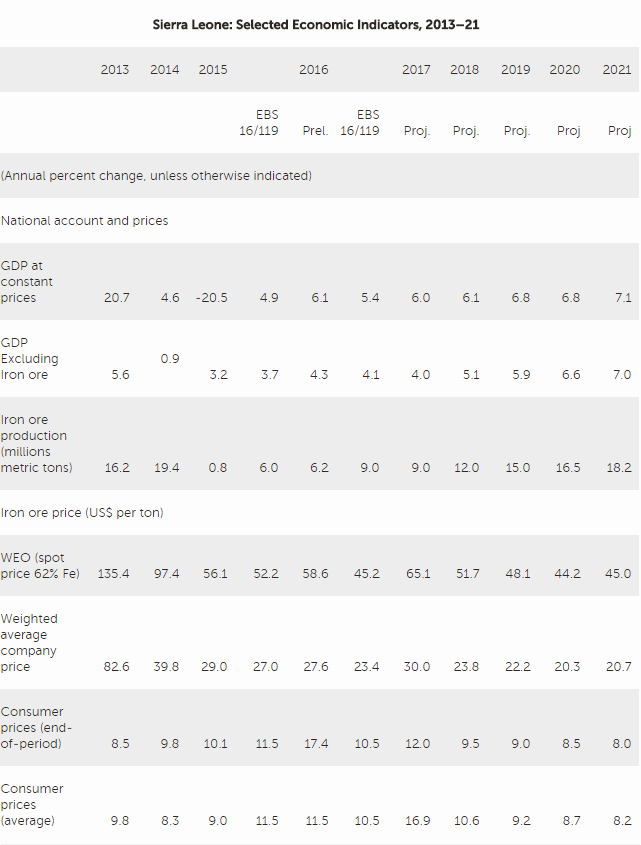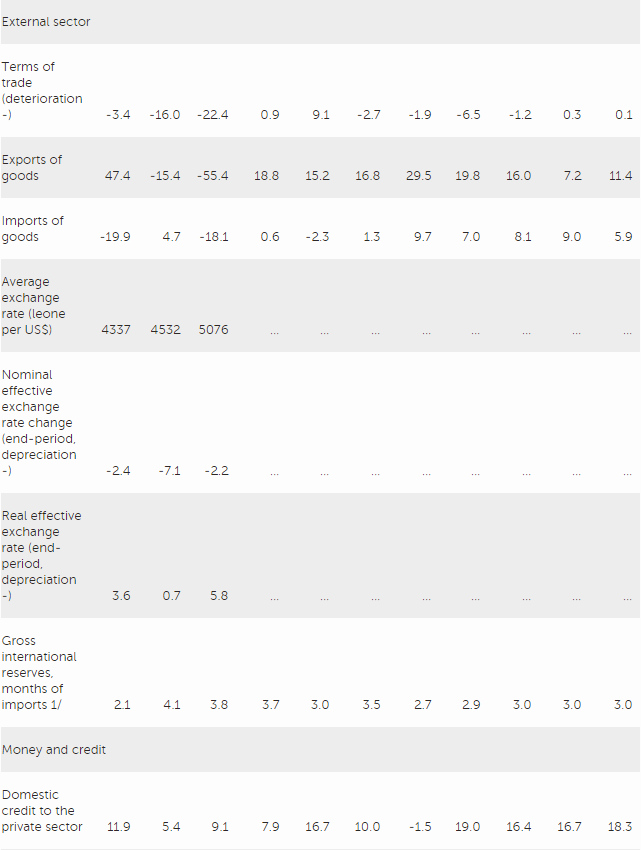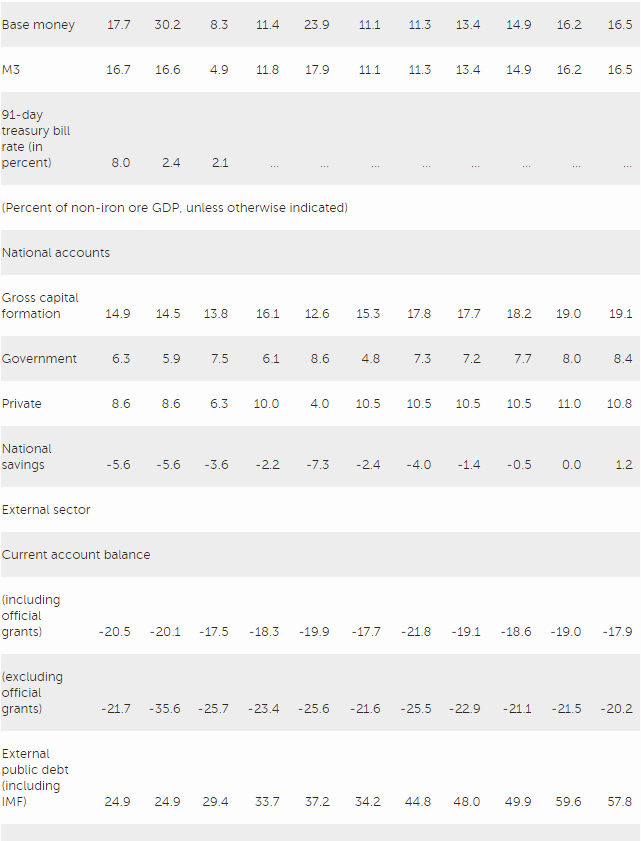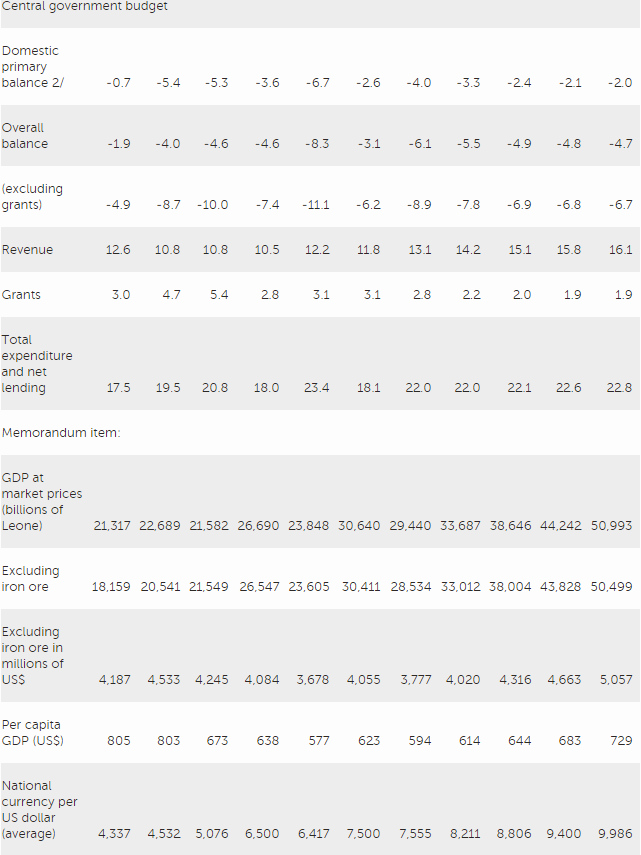IMF Executive Board Approves US$224.2 Million Under the ECF Arrangement for Sierra Leone
● The Executive Board’s decision will enable a first immediate disbursement of SDR39.166 million (about US$54.3 million).
● Growth is expected to reach 7 percent in the medium-term. Under the program, inflation is expected to fall to 12 percent by end-2017, further declining to 9.5 percent in 2018 and narrowing by about 0.5 percent each year thereafter.
● The program aims at supporting important policies targeted at reducing inflation and significantly increasing domestic revenues, while increasing infrastructure spending and bolstering the social safety net.
On June 5, 2017, the Executive Board of the International Monetary Fund (IMF) approved a three-year arrangement under the Extended Credit Facility (ECF) [1] for Sierra Leone for SDR 161.778 million (about US$224.2 million, or 78 percent of Sierra Leone’s quota) in support of the authorities’ economic development efforts.
The program will build on the lessons from the previous ECF arrangement. It aims at supporting important policies targeted at reducing inflation and significantly increasing domestic revenues, including by eliminating numerous tax and duty exemptions, while increasing infrastructure spending and bolstering the social safety net. The ECF program is also expected to play a catalytic role to maintain external support. In the medium-term, the arrangement will provide the framework for structural progress on revenue mobilization, public financial management and financial sector reforms, as well as increased reserves.
The Executive Board’s decision will enable a first immediate disbursement of SDR39.166 million (about US$54.3 million). The remaining amounts will be phased over the duration of the program, subject to semi-annual reviews.
Following the Executive Board discussion on Sierra Leone, IMF Deputy Managing Director Mr. Tao Zhang and Acting Chair, said:
“The new program provides support on three broad fronts: (i) provide financing space in the short-run to fund critical spending; (ii) make a strong contribution to the reduction of poverty; and (iii) support a medium-term structural reform framework, most critically in domestic revenue mobilization, public financial management (PFM), and financial sector reform.
“For the medium-term, the new program focuses on forceful revenue mobilization supported by a medium-term Revenue Mobilization Strategy (RMS), which the authorities will design and implement. On the expenditure front, the authorities are in the process of finalizing the regulatory framework for the recently passed PFM Act. The PFM Act will enhance the efficiency of spending, support medium-term budget planning, and consolidate the cash resources of various ministries, departments and agencies under the roof of the Treasury Single Account (TSA).
“In the short-run, the ECF arrangement will help create fiscal space, which will be used to scale up infrastructure and social spending to support higher and inclusive growth. To further this goal, the authorities’ decision to prioritize public investment, consistent with a moderate risk of debt distress rating, is welcome. The authorities’ efforts to expand the social safety net are also to be commended.
“The authorities’ commitment to implement a fuel subsidy reform no later than the second ECF review is important for a sustainable budget. In the meantime, the alternative actions taken to compensate for the delay in the implementation of this reform are welcome. These measures are the elimination of all import duty and GST exemptions as well as the collection of royalties from mining companies based on published market prices.
“Sierra Leone’s risk of debt distress remains moderate. Financing needs, particularly for large-scale investment projects will need to be covered mostly with grants and concessional loans. In addition, non-debt generating options should be considered for the proposed new airport.
“Monetary policy will remain focused on lowering inflation to single digits. The Bank of Sierra Leone (BSL) shall seek to build reserves, while allowing further exchange rate flexibility and limiting its interventions to smooth exchange rate volatility. The BSL should also take firm action to strengthen the financial system, based on the conclusions of the recently completed diagnostics for the two state-owned banks. The establishment of a civil registry and financial sector reforms, including the move toward risk-based supervision, should help increase credit to private sector.
“Structural reforms aimed at enhancing governance and improving the business environment will help increase support for private sector participation in the economy and promote economic diversification.”
Annex
Recent Economic Developments
Sierra Leone has shown remarkable resilience in overcoming the twin shocks of the iron ore export collapse and the Ebola virus disease epidemic. Growth has recovered to 6.1 percent in 2016 with resumption of iron ore production. Non-iron ore growth also performed better at 4.3 percent. However, although recovery is in progress, challenges remain.
The immediate policy challenge is to re-establish fiscal discipline, increase foreign exchange reserves, and bring the economy back to a path of high growth levels, social progress and macroeconomic stability.
On the fiscal performance front, the deficit was higher than anticipated at 8.3 percent of GDP. Because of increased secondary market operations to finance the deficit, the monetary base expanded more rapidly in the second half of the year, contributing to a sharp increase in inflation. Reserves money grew nearly 24 percent, and inflation exceeded 17 percent by the end of 2016. The current account widened by 1.6 percent of GDP.
Program Summary
The new program aims at providing the necessary financing space to fund critical spending. It will contribute to poverty reduction, mainly by expanding the social safety net to provide relief to vulnerable segments of society that may be impacted by the new policies. The program also supports a medium-term structural reforms framework, most critically in domestic revenue mobilization, public financial management and financial sector reform.
Growth is expected to reach 7 percent in the medium-term. Under the program, inflation is expected to fall to 12 percent by end-2017, further declining to 9.5 percent in 2018 and narrowing by about 0.5 percent each year thereafter.
The main medium-term objective of the program is to unlock the growth potential of the country while reducing poverty. In that regard, it proposes front-loaded financing that would help improve the current account deficit in the medium-term to 18 percent by 2021 from the projected 21.8 percent in 2017.
The fiscal stance envisions gradual tightening in the medium-term to 2.4 percent domestic primary balance by the end of the program, from a projected 4 percent. To support the expansion of domestically financed capital spending as well as the replacement of gradually lower donor financing, there will be need for more forceful revenue mobilization and a strengthening of budget preparation and execution. Monetary policy in the medium-term will aim at containing the inflation below 10 percent.




1/ Refers to reserves in current year and imports in following year.
2/ Revenue less expenditures and net lending adjusted for interest payments.
Source: International Monetary Fund
- 238 reads
Human Rights
Ringing FOWPAL’s Peace Bell for the World:Nobel Peace Prize Laureates’ Visions and Actions

Protecting the World’s Cultural Diversity for a Sustainable Future

The Peace Bell Resonates at the 27th Eurasian Economic Summit

Declaration of World Day of the Power of Hope Endorsed by People in 158 Nations

Puppet Show I International Friendship Day 2020

